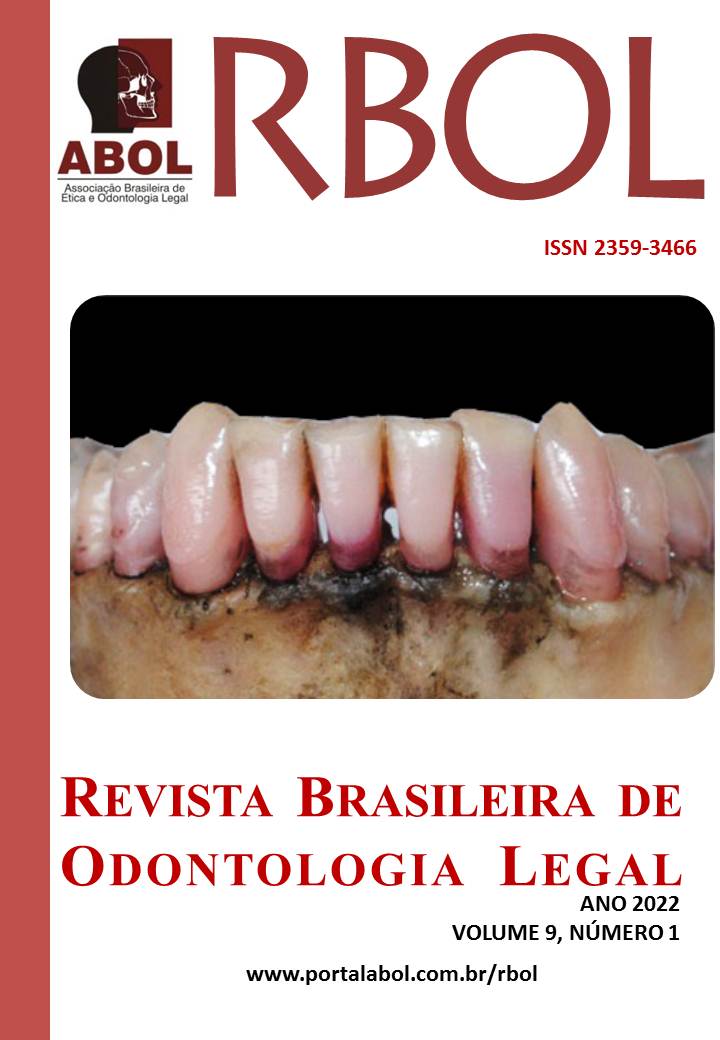THE USE OF INTRAORAL SCANNERS IN FORENSIC ODONTOLOGY: A LITERATURE REVIEW
DOI:
https://doi.org/10.21117/rbol-v9n12022-421Keywords:
Intraoral Scanners, Rugoscopy, Digital Dentistry, Forensic Odontology, Human IdentificationAbstract
The digital workflow is already ubiquitous in the clinical dental practice, and its advantages can be incorporated to the forensic odontology. Intraoral scanners generate digital casts that can be stored, analyzed and compared using the proper software. It’s a technique that swiftly and precisely registers the object of interest, and can be used on-site, if needed, in mass disasters, for example. The goal of this article is to review the most recent applications of the intraoral scanners and the digital files generated by them in the forensic odontology practice. Nine articles were selected for revision. The studies demonstrate that the existing identification techniques can benefit from the use of intraoral scanners and digital casts. Automated comparison algorithms can be of great contribution to the identification process, decreasing the number of suspects that could match a sample. The creation of a universally accepted protocol, and the calibration of the algorithms when there are great alterations or destruction on the post mortem samples is necessary. Human identification relying solely on bitemark analysis, even with digital techniques, is not recommended, due to examiner bias.
Downloads
Published
Issue
Section
License
Os autores deverão encaminhar por email, devidamente assinada pelos autores ou pelo autor responsável pelo trabalho, a declaração de responsabilidade e transferência de direitos autorais para a RBOL, conforme modelo abaixo.
DECLARAÇÃO DE RESPONSABILIDADE E TRANSFERÊNCIA DE DIREITOS AUTORAIS
Eu (Nós), listar os nomes completos dos autores, transfiro(rimos) todos os direitos autorais do artigo intitulado: colocar o título à Revista Brasileira de Odontologia Legal - RBOL.
Declaro(amos) que o trabalho mencionado é original, não é resultante de plágio, que não foi publicado e não está sendo considerado para publicação em outra revista, quer seja no formato impresso ou no eletrônico.
Declaro(amos) que o presente trabalho não apresenta conflitos de interesse pessoais, empresariais ou governamentais que poderiam comprometer a obtenção e divulgação dos resultados bem como a discussão e conclusão do estudo.
Declaro(amos) que o presente trabalho foi totalmente custeado por seus autores. Em caso de financiamento, identificar qual a empresa, governo ou agência financiadora.
Local, data, mês e ano.
Nome e assinatura do autor responsável (ou de todos os autores).

